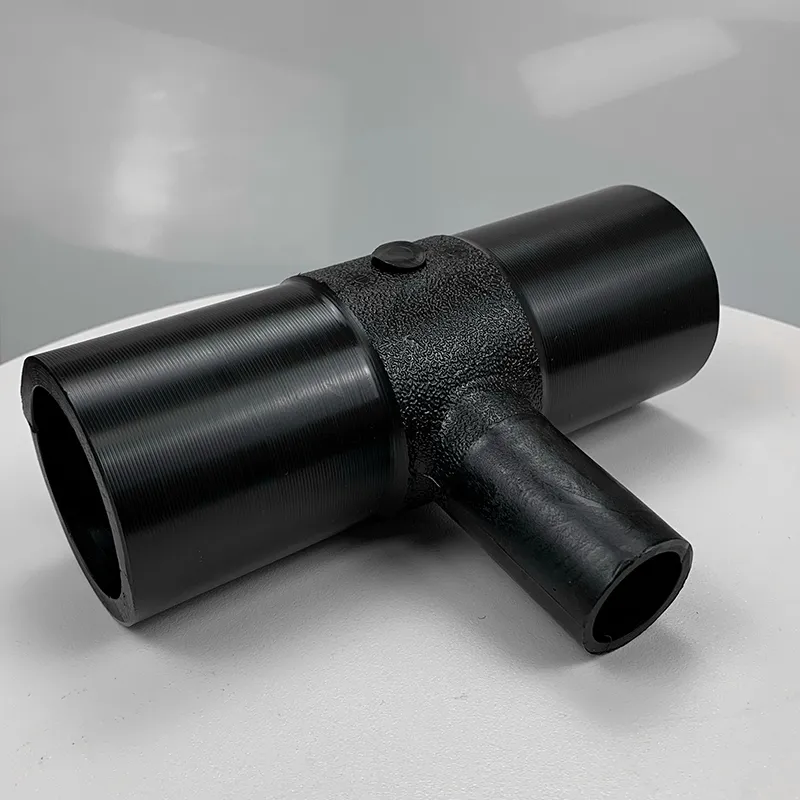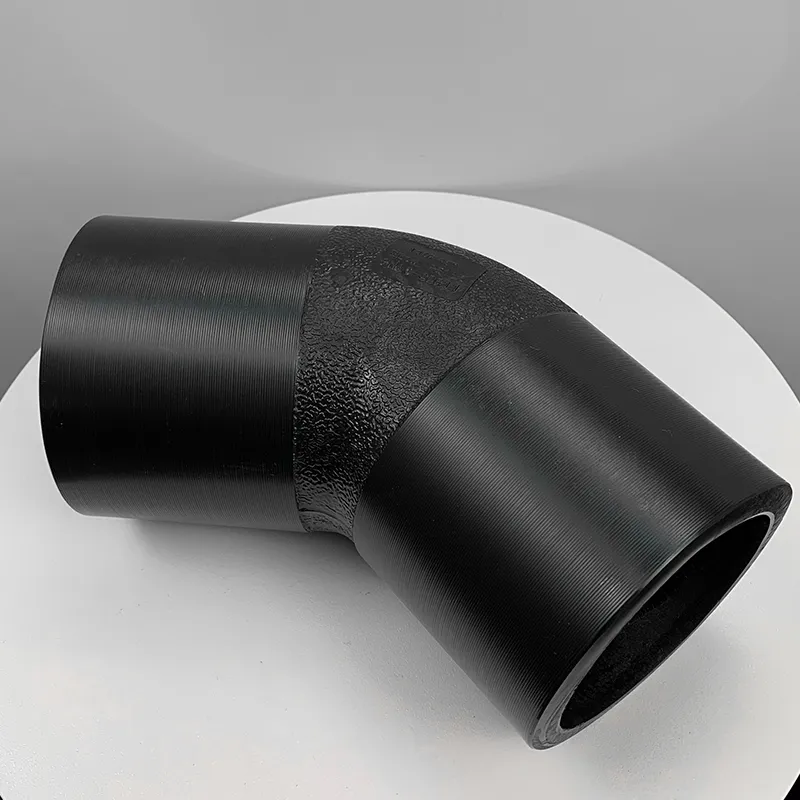What is a Reducing Tee Fitting?
A reducing tee pipe fitting is used when you need to connect two equal-sized pipes together (i.e., a tee pipe fitting) but only one of them needs to be reduced in size (i.e., a reducing section). A reducing tee fitting reduces the interior diameter of both pipes while they remain connected at their smaller ends by using a piping tee system. A reducing tee fitting can be used for a variety of applications such as for household water systems, irrigation, greenhouse and hydroponics, pool pumps and air conditioner-cooling systems. A reducing tee pipe fitting can also be used for exporting natural gas into domestic gas networks.

HDPE or PP Reducing Tee Pipe Fittings
HDPE is a polyethylene (PE) polymer that is commonly used for manufacturing reducing tee fittings due to its excellent chemical resistance and high durability. The exterior of HDPE reducing tee pipe fittings is highly polished and can be made with a wide range of internal and external diameters. HDPE fittings are commonly used in residential and commercial water systems where they can be exposed to hard water and high temperatures. They are also commonly used in irrigation systems, hydroponics, greenhouse, and pool pumping applications. HDPE reducing tee fittings are available in sizes ranging from 25 to 63mm internal diameter. PP is a polypropylene polymer that is commonly used for manufacturing reducing tee fittings due to its excellent chemical resistance and high durability. PP fittings are commonly used in industrial systems where they are exposed to high temperatures and corrosive chemicals. PP reducing tee fittings are available in sizes ranging from 25 to 63mm internal diameter.
Benefits of HDPE Reducing Tee Fittings
- Excellent chemical resistance - HDPE reducing tee fittings offer excellent chemical resistance and resistance to heat, cold, oil and ozone. They are also UV resistant, making them suitable for outdoor applications. - Excellent tensile strength - HDPE reducing tee fittings exhibit excellent tensile strength, making them suitable for use in high-pressure applications. - Excellent impact strength - HDPE reducing tee fittings exhibit excellent impact strength, making them suitable for cold-weather applications. - Lightweight - HDPE reducing tee fittings are lightweight and can be easily installed without the need for extra supports or weights. - Durable finish - HDPE reducing tee fittings come with a durable finish that protects against wear and tear.

Specifications of HDPE Reducing Tee Fittings
Product name: HDPE Reducing Tee Pipe Fitting Internal thread: 1/2" (12mm) External thread: BSP or NPT Material: HDPE Standard: ASME, API, DIN, EN, JIS Cv: 0.20-0.50
Benefits of PP Reducing Tee Fittings
- Excellent chemical resistance - PP reducing tee fittings offer excellent chemical resistance and resistance to heat, cold, oil and ozone. They are also UV resistant, making them suitable for outdoor applications. - Excellent tensile strength - PP reducing tee fittings exhibit excellent tensile strength, making them suitable for use in high-pressure applications. - Impact strength - PP reducing tee fittings exhibit excellent impact strength, making them suitable for cold-weather applications. - Lightweight - PP reducing tee fittings are lightweight and can be easily installed without the need for extra supports or weights. - Durable finish - PP reducing tee fittings come with a durable finish that protects against wear and tear.

Conclusion
Reducing tee fittings are a low cost, easy-to-install connection for piping systems. They reduce the internal diameter of both pipes by using a piping tee system. HDPE reducing tee fittings are commonly used in residential and commercial water systems where they can be exposed to hard water and high temperatures. They are also commonly used in irrigation systems, hydroponics and greenhouse and pool pumping applications. PP reducing tee fittings are commonly used in industrial systems where they are exposed to high temperatures and corrosive chemicals.







294.webp)
476.webp)
420.webp)
146.webp)


